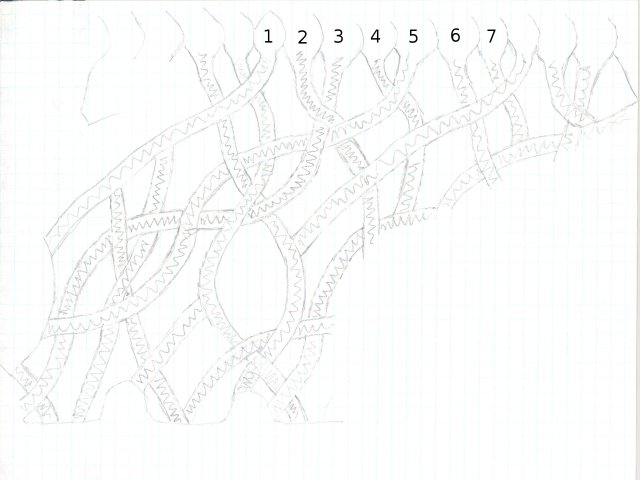
| Number | Translation | Continuation |
| 1 | Be therefore wise as serpents and innocent as doves | |
| 2 | Do not be afraid for I am your God I will help | #4 |
| 4 | Strengthen and uphold you with my righteous right hand | |
| 3 | A time to kill and a time to heal a time to tear down and a time to build up | |
| 5 | For our weapons are not carnal but divinely powerful for the destruction of fortresses | |
| 6 | A musician a warrior one prudent in speech a handsome man | Ivy leaf |
| Ivy leaf | And the Lord is with him | |
| 7 | She looks to her household and does not eat the bread of idleness | back of rose |
| back of rose | A meek and quiet spirit |
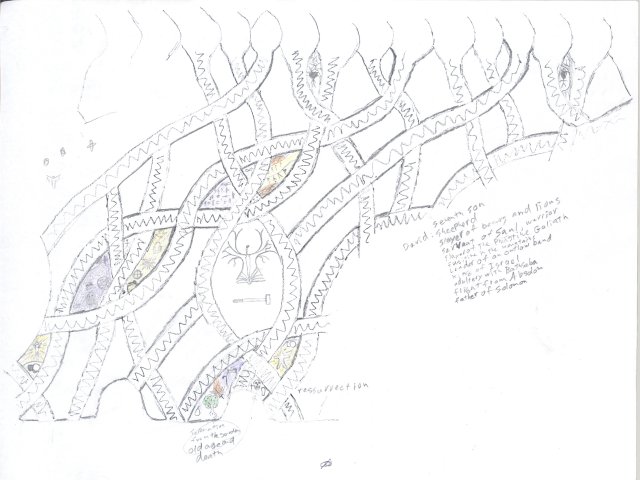
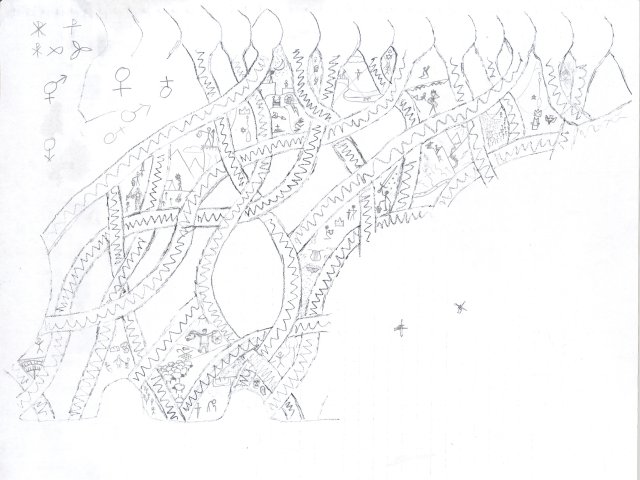
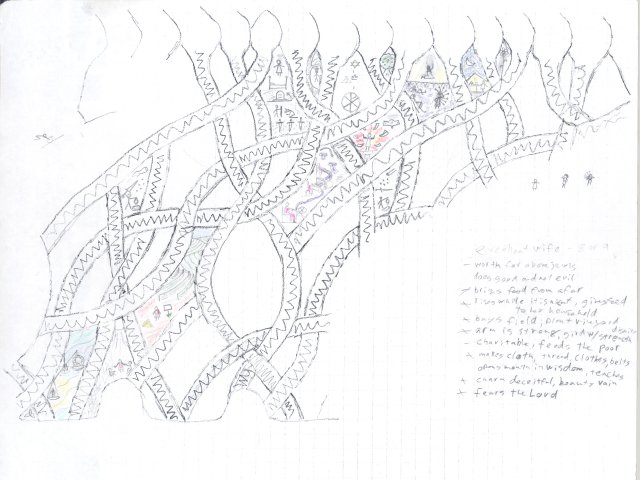
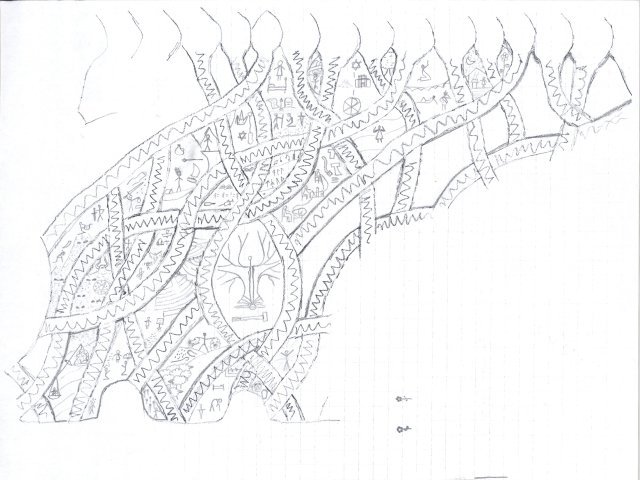
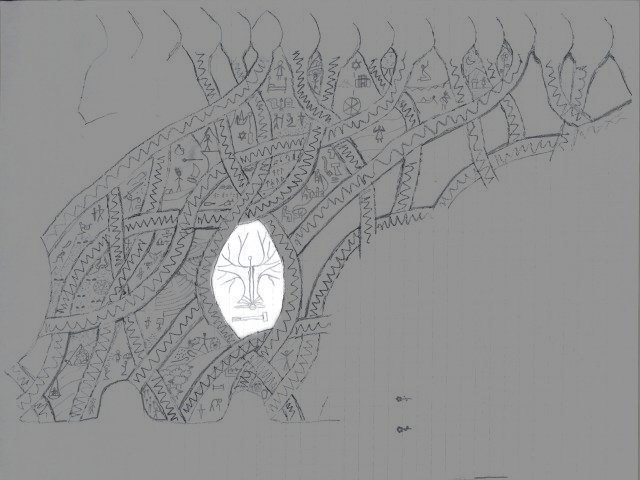
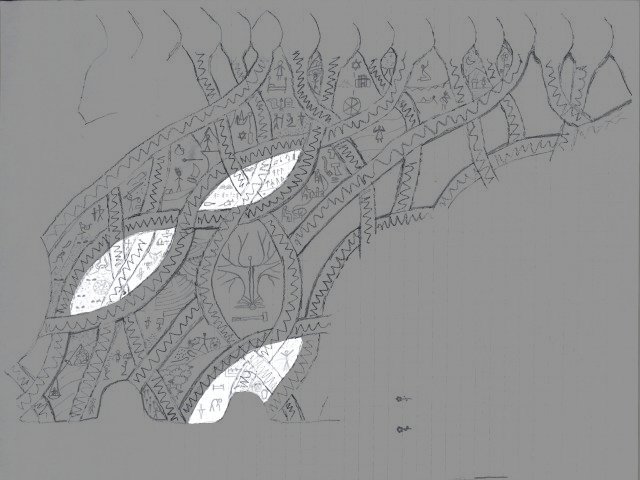
| Left | Middle | Right | |
| Soul (top) | Our knowlege in this life is limited, we can read (book) or use logic (middle equasion) but without hope of eternal life, drugs and death are the only solace for the tormented mind (syringe) | Only in eternity (infinity symbol) will we know fully. | In eternity, we will be able to learn "all truth" (the translation of the runes). The perfected soul will not be darkened by falsehood or despair. |
| Spirit (middle) | Satan (horned head) in his kingdom of darkness rules over the unsaved spirits. If you look carefully you can see the eyes peering out of the darkness. The inverted pentagram is a classic symbol of satanism | Everyone (the person) can chose whether to serve the darkness or the light. | God is the ruler of all godness and light in the spiritual realm. His angels serve him in this (below is a wheel within a wheel, above, a more classical angel). At the top is the Holy Trinity, Father (the throne) Son (the Chi-Rho or Labarum) and Holy Spirit (the dove) |
| Body (bottom) | Violence (sword), old age (bent over man with cane, bed), sickness (bed, pulse monitor) is the fate of the un-perfected flesh. Eventually, everyone dies. | Death (skull, casket) is the fate of the body, only through Jesus Christ (cross) can we pass through death into life. | At the ressurection, we will recieve new bodies. Bodies that will never die. |
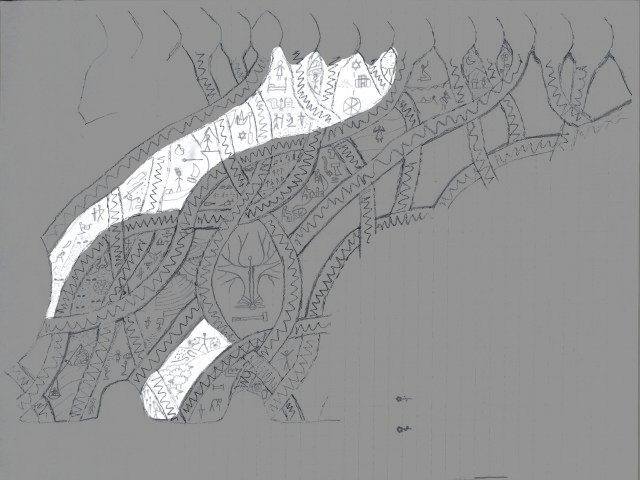
| David is the seventh son (six figures above him) |
| Sheepherd (sheep, crook), slayer of lions and bears (sling) |
| Annointing as king, harp player for King Saul, warrior in Saul's army |
| Slayer of Goliath (large sword, five sling stones, severed head) |
| David spares Saul twice (cut edge of the robe, taken spear and water jug) and announces this to Saul in his camp (saul is the one with the spiky head, it is supposed to be a crown) |
| David becomes king over all Israel |
| Incident with Bathsheba (reads top down). Bathsheba, david's adultery with her, the letter to Joab, the arrow that slew Uriah, Uriah's grave, Nathanael (with the staff) confronts David (with the crown) and declares that the sword(far right side) will never leave his household |
| Absolom hanging from a tree |
| David (star of david) father of Solomon the rich (pile of gold) and builder of the temple (building on the right), line of David to Christ (Chi-Rho) |
| Strong tree, representing strength and fruitfulness of a righteous man. |
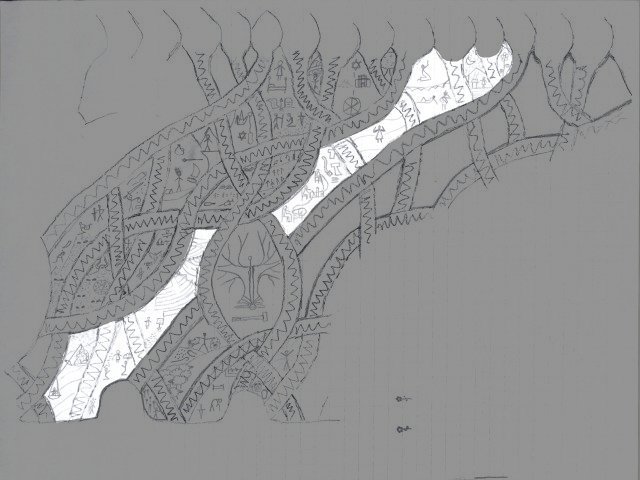
| Her worth is far above jewels, scale with the woman on one side and a humongous gem on the other. |
| She stretches out her hands to the needy, gives bread to the poor. |
| She buys a field and plants a vineyard, her gain is good. |
| She makes cloth, and girds herself in purple. |
| She girds her arms in strengh (runes read "strength"). |
| "Charm is decietful, and beauty is vain, but a woman who fears the Lord, she is to be praised." Above is the woman who fears the lord, below are the charlatains who care only for looks and charm. |
| She arises early, while it is still night, and prepares food. |
| A flower, portraying the beauty and delecacy of a woman. |